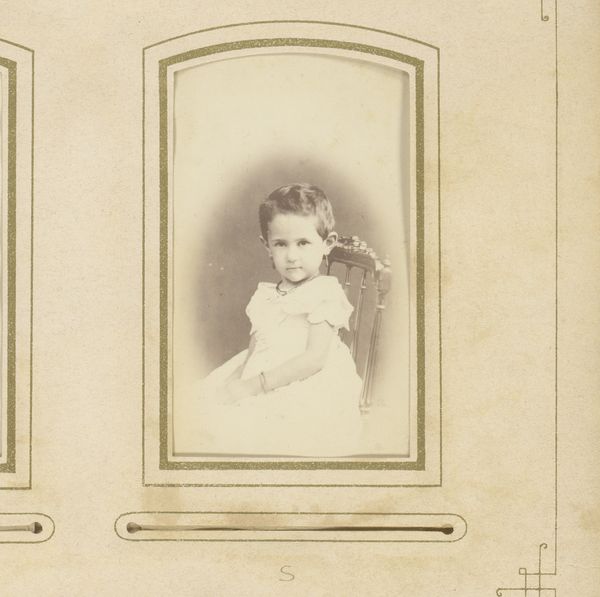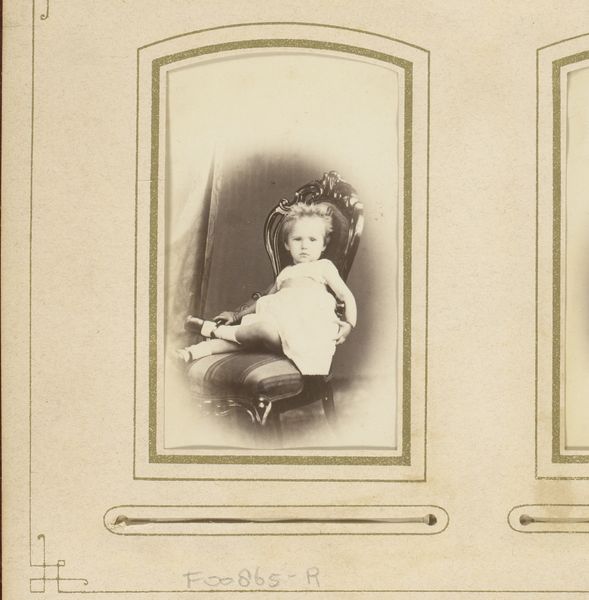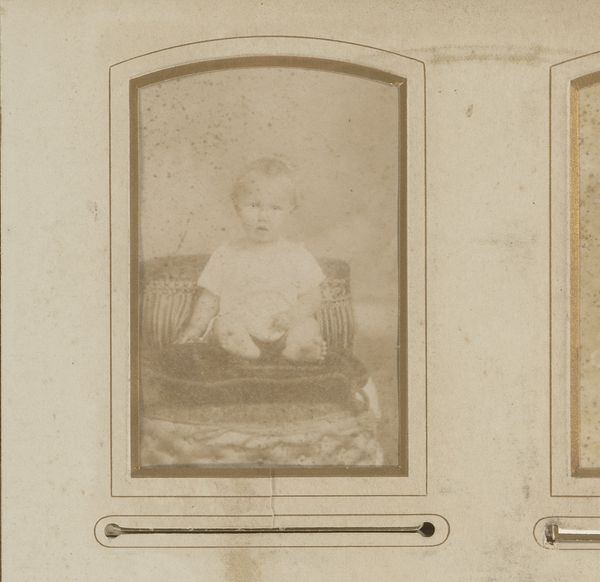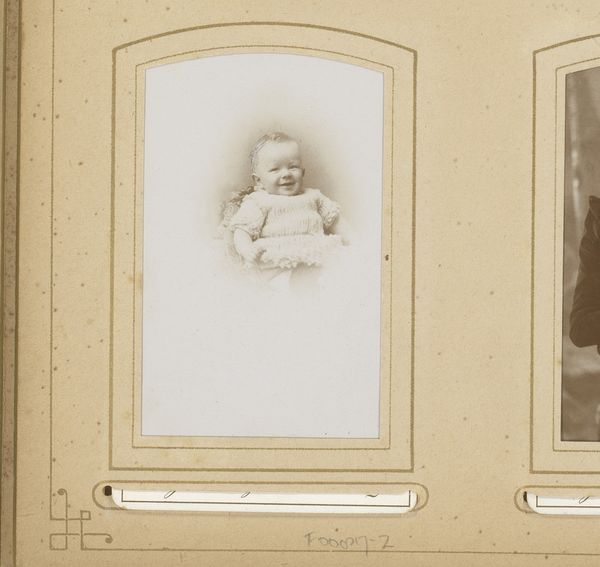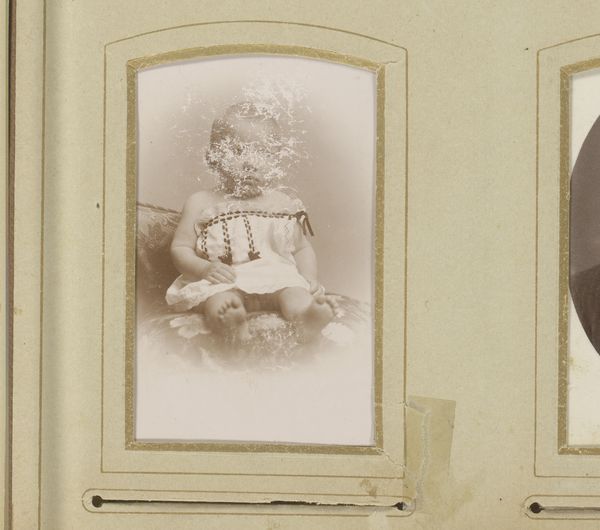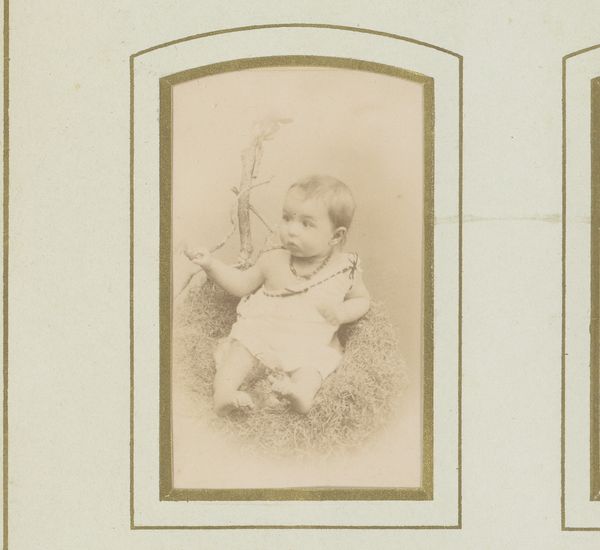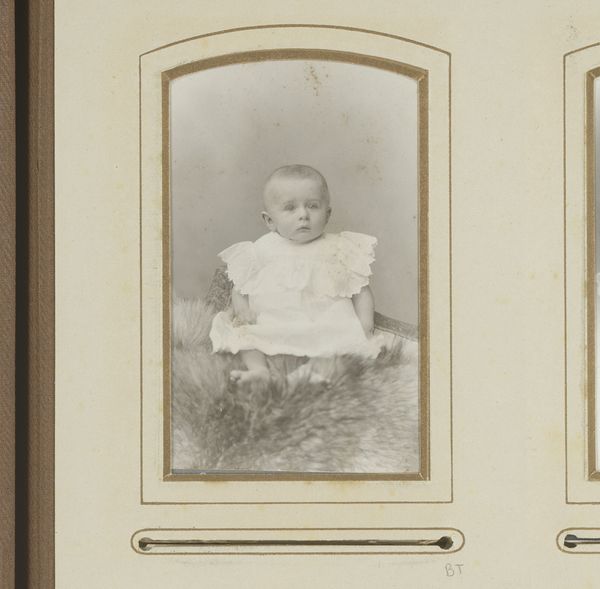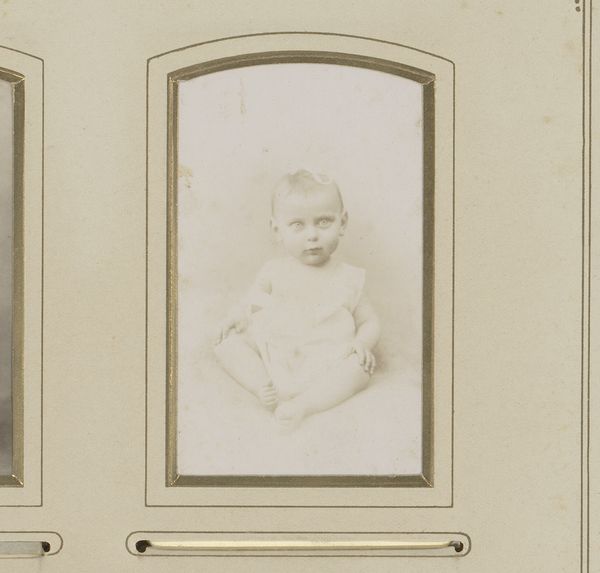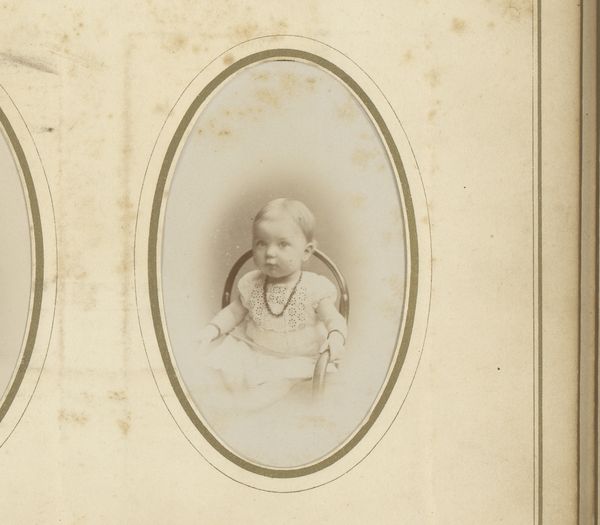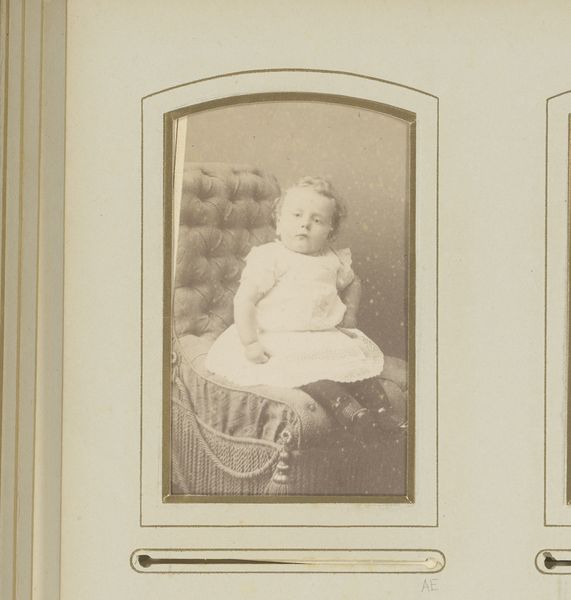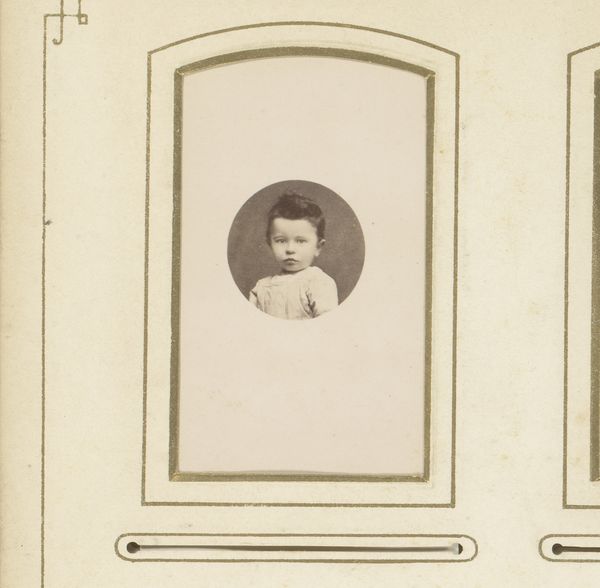
photography
#
portrait
#
photography
#
19th century
#
genre-painting
Dimensions: height 85 mm, width 50 mm
Copyright: Rijks Museum: Open Domain
Curator: This sepia-toned photograph by Woodbury & Page, created around 1872, presents a seated woman holding a young child. The title tells us the child’s name is Jacqueline Mahie, aged one and a half years. What catches your eye first? Editor: That unflinching gaze! Even at such a young age, there's a certain gravitas. The subdued color palette lends an aura of timelessness and quiet dignity. It feels so personal, yet slightly staged, wouldn’t you agree? Curator: Absolutely. It's a portrait created within a very specific colonial context. Photography at this time was still largely confined to professional studios, mostly by and for affluent families or colonial functionaries, who want to visually perform their success. It really captures the aspirations and, of course, also the limitations of photographic portraiture within this social setting. Editor: Speaking of visual performance, notice how Jacqueline holds the doll. A doll symbolizing youth and purity, while also highlighting the era’s focus on children representing their family’s legacy. The contrast in skin tones between the sitter and the child further enhances this sense of inherited status. Curator: Yes, you touch on very relevant aspects. The portrait is revealing of race and class relations during the Dutch colonial presence in the Dutch East Indies, now Indonesia, where Woodbury & Page operated. The woman could possibly be a “baboe”, or nanny, but it is also possible that she’s a wet nurse. A potent representation of colonial power dynamics in nineteenth-century portraiture. Editor: So it is—but perhaps it shows something more. There’s something to the protective clasp that to me transcends the simple image of “native nanny with colonial baby.” Maybe it hints to real intimacy in this cross-cultural setting as well. A testament to resilience of basic human connections despite a harsh social regime? Curator: I would say it speaks to the immense emotional labor women in that position performed for their colonizer “madams” as well, more than hinting on possibilities for a fully symmetric human interaction. Nevertheless, what I do take away from our conversation is how many layers are contained within the deceptively straightforward format of the portrait! Editor: Agreed. This little window into the past provides many angles into this historical relationship, which really proves how impactful a singular photographic frame can become!
Comments
No comments
Be the first to comment and join the conversation on the ultimate creative platform.
